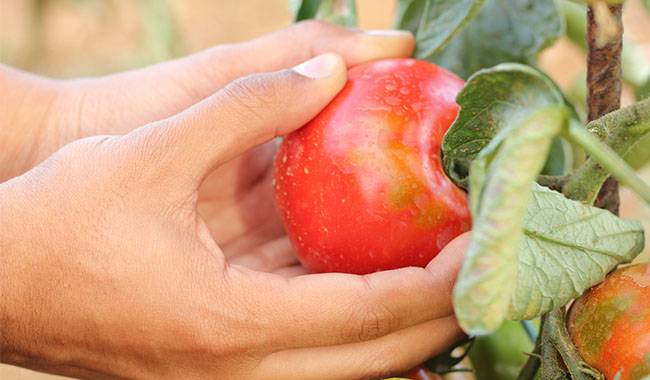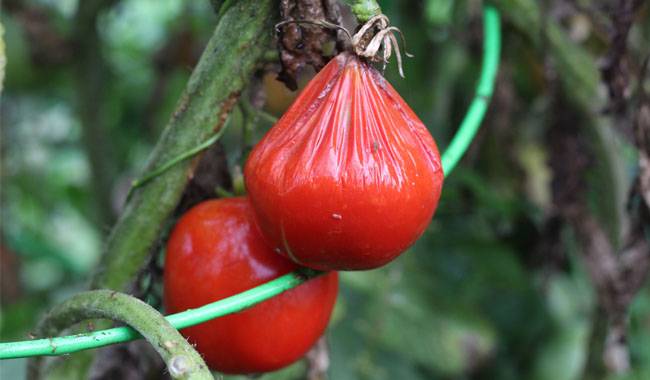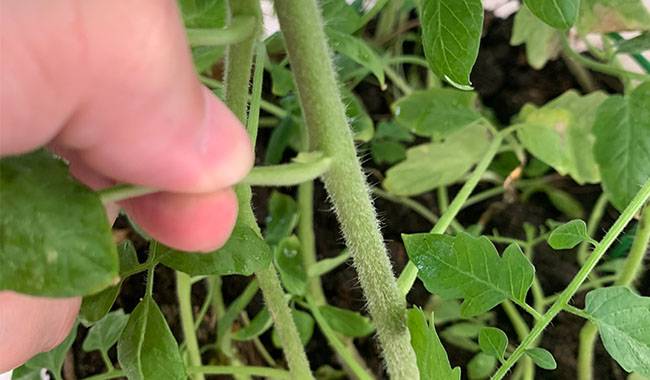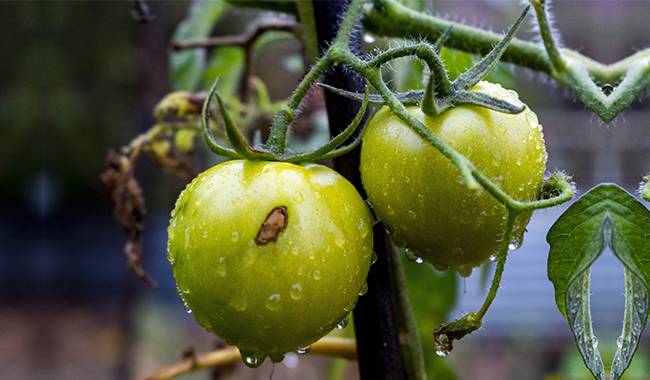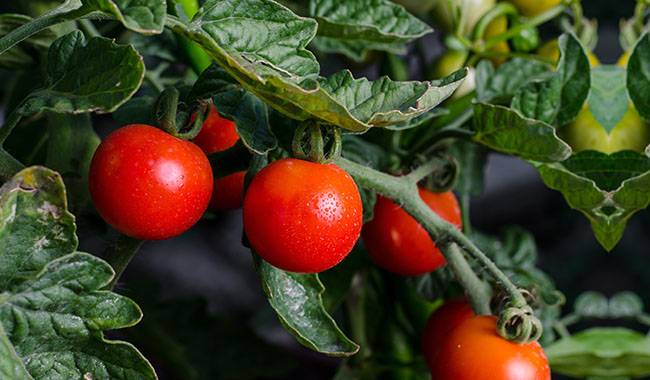
Leaf curling in tomato plants is not uncommon and this phenomenon is observed annually in protected and outdoor crops. In most cases, leaves curl only on individual bushes or even twigs of tomato bushes, but sometimes this phenomenon can be seen almost throughout the plantation.
So why do tomato plants develop leaf twisting, how can this problem be solved, and how can this phenomenon be prevented from reoccurring in the next year? We will discuss all these questions in this article.
Damaged tomato roots
Tomato leaf plates can begin to curl immediately after planting seedlings in the ground or in the greenhouse. This is usually due to damage to the roots during the transplanting process. In this case, it is difficult to help the seedlings. If there are enough nutrients and water in the soil, the plant should be left alone and the leaf plates should return to normal after 4-5 days.
Incorrect watering of tomatoes
This is probably the most common cause of leaf curling. As you probably know, tomatoes like plenty of water, but these plants should not be watered from time to time, with long pauses, but regularly. Just violating the dosage of water, the timing of watering, and the frequency of wetting the soil can cause trouble with leaf disc curling.
For example, tomatoes especially need water after planting seedlings in the open ground or in a greenhouse, that is, in a permanent place. During this period, 1-1.3 Gal (4-5 liters) of water should be poured under them. Then, a second watering can be done 9-11 days after the first one, with 1.6-2 Gal (6-8 liters) of water under each bush.
After that, water the tomatoes in the greenhouse regularly – once or twice a week, depending on whether the weather is hot or cool, and in the open field – depending on the availability of natural moisture (rain). If there is no rain, then water weekly with 1.3-1.8 Gal (5-7 liters) of water under the bushes, but if it is raining regularly, then perhaps no watering is needed.
Watering should be increased by a third during oviposition and when tomatoes start to bear fruit, but it still depends on the weather.
Due to the lack of water, the leaf plates of tomatoes begin to curl inward, so the plant protects itself by minimizing water evaporation. If you notice this, you need to start watering quickly, but you shouldn’t pour out a lot of water at once; it’s best to pour out 0.4-0.5 Gal (1.5-2 liters) of room temperature water every day for a week until the leaves normalize.
Conversely, if there is a lot of water in the soil, the edges of the tomato leaves will curl upward and the plant will thus increase water evaporation. Therefore, it is necessary to immediately stop watering and leave the soil undisturbed for 10-15 days.
Do not forget that it is better to water tomatoes in the morning or in the evening to avoid the curling of leaf plates. Do not water during the day, especially if it is very hot and the sun is shining. When watering, use settled water at room temperature.
High temperatures
Violation of the temperature regime when growing tomatoes in greenhouses or strong heat when growing in the open ground can also cause leaf plates of these plants to curl. Therefore, in a greenhouse for tomatoes, you need to create conditions for temperatures of 70-73°F (21-23°C) during the day and 62-66°F (17-19°C) at night.
When the temperature rises above 86°F (30°C), the plants begin to experience temperature stress. In this case, in addition to the leaf plates of tomatoes curling, you can also observe the dropping of flowers and ovaries. In a greenhouse, you can lower the temperature by opening doors and vents, but the room should be sporadically ventilated without drafts. If the greenhouse is not designed with windows, you can paint the inside white or cover it with a white cloth to lower the temperature.
Outside, you can try to shade the plants and intensify watering in the evening and morning, in addition to adding 15-20 grams of diammonium hydrogen phosphate dissolved in water per 11 square feet. In addition, the middle row should be covered with hay or straw, or with a non-woven white or light-colored bedding material.
The leaf plates of tomatoes curl strongly due to heat. You can try to eliminate this problem by foliar feeding, i.e. spraying the plants in the greenhouse and on the plots with an aqueous solution of urea (1.5 tablespoons per bucket of water, standard for 8-10 plants). After three days, you can make another foliar spray, but this time with potassium sulfate, dissolving 8-10 grams of fertilizer in a bucket of water at a rate of 10-12 plants.
Too much or not enough fertilizer
You can’t get a good tomato crop without fertilizer, and many people know this, but some people contribute too little for fear of damaging the plant, while others want to maximize yields and contribute too much. Both of these conditions can cause tomato leaves to curl.
For example, in the presence of excess zinc in the soil, the edges of tomato leaves begin to curl. This can be confused with similar symptoms of water deficiency or excess, but in the case of excess zinc in the soil, the lower part of the tomato plant becomes purple in color that is not typical of these plants.
With excess manganese in the soil, tomato leaves first curl, then shrivel and turn bright green.
Due to excess nitrogen in the soil, the leaf plates begin to curl, usually at the top of the plant. To counteract the effects of nitrogen, you can add potassium sulfate (8-10 grams per 11 square feet) or wood ash (50-80 grams per plant) to the soil that was previously loosened and watered.
With deficiencies in elements such as calcium, tomato leaves begin to curl upward, and such a state of leaf plate is often accompanied by root tip rot on the fruit. If excesses of zinc and manganese are quite difficult to eliminate, calcium deficiencies can be easily solved by adding calcium nitrate to the soil. To do this, dissolve about 18-22 grams of calcium nitrate in a bucket of water and add 350-400 grams of wood ash and 8-12 grams of urea to the solution. This solution is sufficient for 30-40 square feet of soil under tomatoes.
In the absence of phosphorus, tomato leaves will also curl but will become gray. To quickly restore the flow of phosphorus to the plant, you need to make soil with an aqueous solution, diluting 80-90 grams of calcium superphosphate in a bucket of water, which is enough for 30-40 square feet of cultivated tomatoes.
In the absence of copper, the leaf plates of tomatoes, in addition to curling, acquire an atypical yellow color, sometimes covered with yellow spots, which can later begin to turn black. Treatment with copper-containing preparations, for example, will help to restore the copper balance.
Lack of stepped architecture
Horticulture is the removal of side shoots, and if this is not done, the tomato plant will begin to branch aggressively. This leads to excessive thickening of the plant and the plant will form a large number of leaf masses, usually twisted.
Correcting this is often difficult, especially if the plant is severely neglected, so you need to weed the tomatoes when they are young when they can tolerate this operation as painlessly as possible.
Remember that it is best to break the stems rather than cut them, and to do this in the morning when the plants are moist. The stems should not exceed 2inch (5cm) in length.
Tomato diseases
The leaf plates of tomato plants are often curled due to various diseases. It is most active in weedy planting sites, in places where crop rotation is not taken care of, where plants are over-watered, and where the soil is not loosened, developing various diseases.
Candidatus Phytoplasma solani (stolbur)
This disease usually distorts and deforms the leaf plates of tomatoes, especially in the upper part of the plant, and they turn pink or purple in color. Candidatus Phytoplasma solani is best controlled with “phytofibrate”, which is the most effective agent. When spraying plants, you need to prepare the solution exactly according to the instructions on the package.
Bacterial canker of tomatoes
When tomato plants are infected with bacterial cancer, the leaf plates first begin to curl upward and then wilt. You can tell it is bacterial rot by the reddish-brown spots on the young shoots. Usually, it is the lower leaves of the tomato plant that curl and wilt first, and then the disease spreads higher up and eventually affects the entire plant.
As a preventive measure, considering that bacterial cancer develops fastest in conditions of high soil and air humidity, as well as the presence of various types of damage on the plant, you need to water the tomatoes with a moderate amount of water, not allow overwatering of the soil, and not allow damage on the lower main stem of the tomato plant when working on the plant (weeding, loosening the soil).
Bacterial rot of tomatoes is difficult to control, but in the initial stages of the disease, plants can be treated with copper sulfate, copper oxychloride, or Bordeaux mixture. When treating, try to dampen the lower and upper parts of the leaves and spray the soil surface as well. It is very good if you loosen the soil a little before treatment.
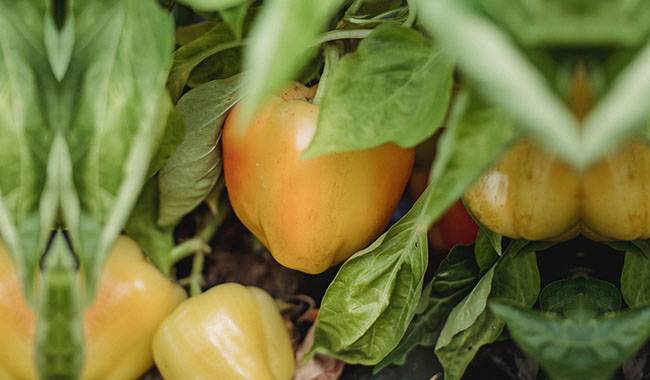
Tomato pests
In addition to disease, it often causes leaf plate curling and insect damage in tomato plants. Most often this is caused by none other than sucking pests, which suck sap from the leaf tissue. Pests that commonly cause tomato leaf curling are whiteflies, Aphid, and spider mites.
Whiteflies
This is a white moth that lives mainly on the lower leaves of tomato plants. As a result, they are start curling and then wilt. Bee flies are most common in greenhouses; if they have started to curl the lower leaves, just shake the plant; you may scare off the moth and it will appear.
If you see whitefly, you can be sure it’s the culprit. Whiteflies can be controlled with any approved insecticide, such as insecticides or miticides. If you don’t want to use harmful chemicals, you can treat whitefly-infested tomato plants with a yarrow infusion (150 grams per 1.3 Gal of water) by adding half a bar of soap to the solution. Try to treat in the morning and late afternoon, making sure to pay attention to the lowest leaves of the tomato plant first.
For prevention, you can treat tomatoes with a garlic infusion (2-3 heads per 1.3 Gal of water) or dandelion (500 grams per 0.8 Gal of water).
It is important to remember that insecticides can be applied no later than 20 days before harvest. Any treatment should preferably be carried out on a cloudy day, but only in the absence of rain.
Aphid
Aphid is rare but can still affect tomato plants; they are often found in open fields but can also be found in greenhouses. aphid most often causes distortion of the top leaves of the plant. It is easy to identify as Aphid: turn the tomato leaves over and you will see the bugs on top. It is not uncommon to see ants lurking between them; they are carriers of Aphid and feed on its sweet secretions. Therefore, you must first exterminate the ants to start the battle with Aphid, which is a much more difficult task. However, Aphid can be removed using insecticides – be sure to get approval and follow the instructions closely.
However, you can also eliminate Aphid without using any chemicals, especially if the Aphid population is low. You can treat the plant with an infusion of Aphid (500 grams per 0.8 Gal of water) or Leucaena (250 grams per 0.8 Gal of water). For best results, add 70-80 grams of laundry soap to the infusion of Melaleuca alternifolia and Aphidium.
To ensure that Aphid does not settle on the tomato plants, you can treat them regularly (about once a week) with an ash solution, which requires 300 grams of ash dissolved in a bucket of water and use this solution to treat the tomato plants. For maximum effect, the solution should be allowed to sit for 48 hours to saturate the solution with the ash content.
Spider mite
This pest also causes leaf plates of tomatoes to curl as it sucks the sap from the leaves. Spider mite, which is most common on tomatoes in greenhouses, also occurs in open fields, but less frequently.
You can learn that this is a spider mite by the leaf plates that curl and begin to wilt, and at the base of the leaf plate, you can see a spider web.
To control mites, including spider mites on tomatoes, modern approved acaricides can be used. It is important to know that acaricides can be used up to 20 days before harvest.
If it is necessary to drive out spider mites in tomatoes without using chemicals, you can treat plants with an infusion of dandelion (500 grams per 0.8 Gal of water), onion feathers (500 grams per 0.8 Gal of water), or garlic cloves (10-15 cloves per 0.8 Gal of water).
Variety peculiarities
Some tomato varieties have curled leaves, not because of any disease, pest, or lack of elements in the soil, but because it is a biological characteristic of them.
CONCLUSION
When you see curled leaves on tomato plants, do not immediately grab chemicals or fertilizers, first assess the conditions your plants are in. What often happens is that they simply don’t have enough water, or conversely, too much water. Water if the soil is too dry, stop irrigating if there is too much water, do some nurturing. And only when none of this helps, try fertilizing or taking the pest control measures we have described.
If you have any questions, we will be happy to answer you in the comments.
More related information about growing tomato plants




